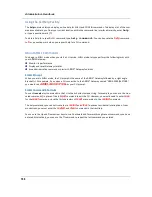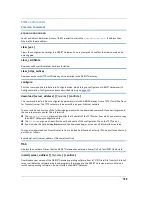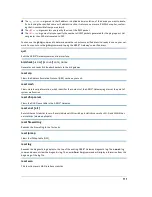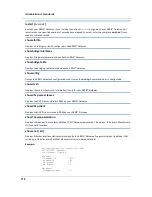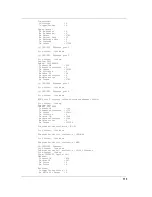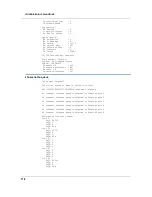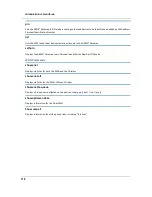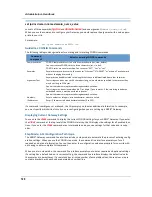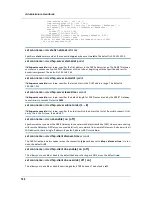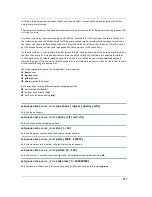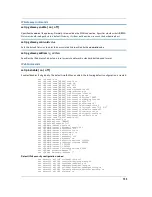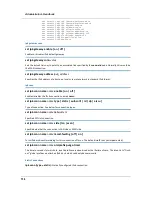
Administrator’s Handbook
122
CONFIG Commands
This section describes the keywords and arguments for the various CONFIG commands.
Connection commands
conn
s are used to create connections, for example, a WAN or LAN
conn.
There may be more than one of each
depending on your model.
name
s correspond to the system object IDs (OIDs) but you can name them yourself.
set conn name
name
link-oid
value
Sets the connection named
name
to point to an associated link specified by the
link-oid
value.
set conn name
name
type [ static | dhcpc | ppp ]
Specifies whether the
type
of the connection named
name
is static, dhcpc, or ppp.
set conn name
name
side [ lan | wan ]
Specifies whether this conn is LAN- or WAN-side. A
conn
can be either
lan
or
wan
.
set conn name
name
lan-type [ private | public | public-delegated ]
Specifies whether this conn’s LAN is private, public, or public-delegated. The default is
private
, the usual type
of local network.
set conn name
name
dhcp-server-enable [ on | off ]
Turns the DHCP server for this connection
on
or
off
. The DHCP server can be enabled per connection. The
default is
on
.
set conn name
name
mcast-forwarding [ off | on ]
Turns IP IGMP multicast forwarding for this connection
off
or
on
. The default is
off
.
set conn name
name
rip-send [ off | v1 | v2 | v1-compat | v2-md5 ]
Specifies whether the device should use Routing Information Protocol (RIP) broadcasts to advertise its routing
tables to other Gateways. RIP Version 2 (RIP-2) is an extension of the original Routing Information Protocol
(RIP-1) that expands the amount of useful information in the RIP packets. While RIP-1 and RIP-2 share the same
basic algorithms, RIP-2 supports several additional features, including inclusion of subnet masks in RIP packets
and implementation of multicasting instead of broadcasting (which reduces the load on hosts which do not
support routing protocols. RIP-2 with MD5 authentication is an extension of RIP-2 that increases security by
requiring an authentication key when routes are advertised. Depending on your network needs, you can con-
figure your device to support RIP-1, RIP-2, or RIP-2MD5.
If you specify v2-MD5, you must also specify a rip-send-key. Keys are ASCII strings with a maximum of 31 char-
acters, and must match the other Gateway(s) keys for proper operation of MD5 support. The default is
off
.
set conn name
name
rip-receive [ off | v1 | v2 | v1-compat | v2-md5 ]
Specifies whether the device should use Routing Information Protocol (RIP) broadcasts to update its routing
tables with information received from other Gateways on the other side of the connection. If you specify
v2-
md5
, you must also specify a rip-receive-key. Keys are ASCII strings with a maximum of 31 characters, and must
match the other Gateway(s) keys for proper operation of MD5 support. The default is
off
.
Содержание NVG595
Страница 1: ...ARRIS NVG595 Fiber Business Gateway ARRIS Embedded Software Version 9 1 2 Administrator s Handbook ...
Страница 10: ...Administrator s Handbook 10 ...
Страница 65: ...65 ...
Страница 68: ...Administrator s Handbook 68 ...
Страница 84: ...Administrator s Handbook 84 The following is an example log portion saved as a TXT file ...
Страница 90: ...Administrator s Handbook 90 ...
Страница 185: ...185 Please visit http www ARRIS com recycle for instructions on recycling ...
Страница 210: ...Administrator s Handbook 210 ...
Страница 220: ...Administrator s Handbook 218 ...
Страница 224: ...Administrator s Handbook 222 ...
Страница 226: ...Administrator s Handbook 224 ...

